Facing plight and moving forward by VSF-weakening expectation
China's economic development is facing triple pressure of demand contraction, supply shock, and weakening expectation—by Premier Li Keqiang at the Fifth Session of the National People's Congress on Mar 5, 2022.
Premier Li summed up the current pressure on economic development and accurately predicted the current situation of the manufacturing industry, which is also the status quo of VSF industry. When we review the market changes in the first five months of 2022, the core elements basically rely on the three points.
Weakening expectation
Compared with the two points (supply shock and demand contraction) mentioned before, the quantification of expectation is more difficult, but we can feel the objective influence of expectation.
Global economy
From a macroeconomic perspective, the IMF in Apr lowered the global economic growth rate of 2022 from 4.4% in 2021 to 3.6%.
The World Bank in Jun downgraded the global economic growth in 2022 to 2.9% from 4.1%.
OCED in June downgraded global growth of 2022 to 3.0% from 4.5%.
It is rarely seen that the major institutions significantly downgrade economic growth at the same time, and they warn that the world may experience stagflation occurring in the 1970s. Based on the distribution of global wealth, some institutions even predict that the challenges facing by the global economy are likely to exceed those in the 1970s.
China's economy
China's economic turbulence is weaker than the global one, which depends on the management characteristics of Chinese government, but greater pressure does exist in 2022.
The GDP grows by 4.8% year-on-year in the first quarter, weaker than the full-year target and the growth rate in the second quarter may be hard to overtake that of the first quarter due to a new wave of COVID-19 infections. Import and export keeps relatively normal, while both investment and consumption are challenging. It is well known that China's real estate development has encountered challenges. According to the data of NBS, the cumulative growth rate of real estate investment in the first five months of 2022 is -4%, and the performance of infrastructure investment is relatively good. The cumulative growth of fixed investment in the first five months is 6.2%, which is comparable to the pre-epidemic level. However, private fixed asset investment has declined.
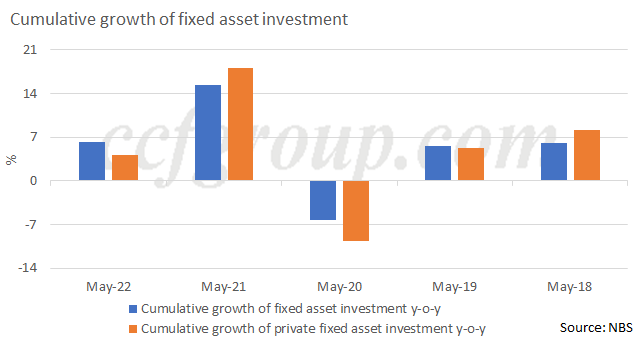
Employment also faces new challenges as the unemployment rate in the first five months shows signs of rising. The national urban survey unemployment rate in May is 5.9%, and urban survey unemployment rate of population aged 16-24 is as high as 18.4%, the highest level after the epidemic.
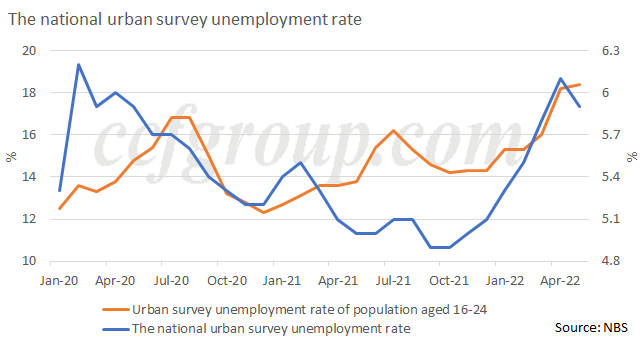
The increase in unemployment has led to a decline in consumer confidence and it can be seen a steep decline in 2022 from the chart. The figure in Apr is only 86.7 (100 is the equilibrium value), a year-on-year decrease of 28.64% and a month-on-month decrease of 23.41%. It is well known that the reducing consumption in Apr is caused by the epidemic and the figure is expected to recover by overcoming the epidemic impact, but it is hard to say whether it can resume to the optimistic range of over 100.
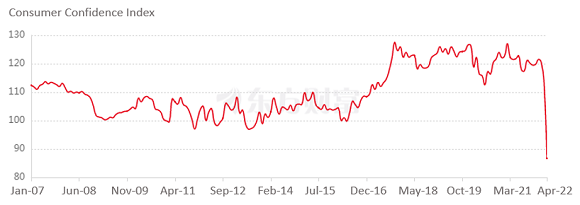
Viscose industry
Returning to viscose industry, it can be seen objectively that as a manufacturing link close to the resource side, the confidence in VSF market is positive in the first five months of 2022, which is the main reason of falling VSF inventory but rising VSF price. But looking at the whole industry chain, the positive sentiment cannot be conducted and there is even recession of confidence to negative territory at the apparel side. Generally speaking, rent is a more intuitive manifestation of the prosperity of textile and apparel wholesale. Since the beginning of this year, there has been falling rent in fabric and apparel markets in many areas of China. Among them, the rent in Yiwu even shows signs of halving.
From the price performance of each link in the industrial chain, we can also see the prosperity. It can be seen that the price increase of VSF and dissolving pulp is significantly higher than that of downstream products. Although the increase of VSF is slightly higher than that of dissolving pulp, the former also bears the surging cost of energy and chemicals.
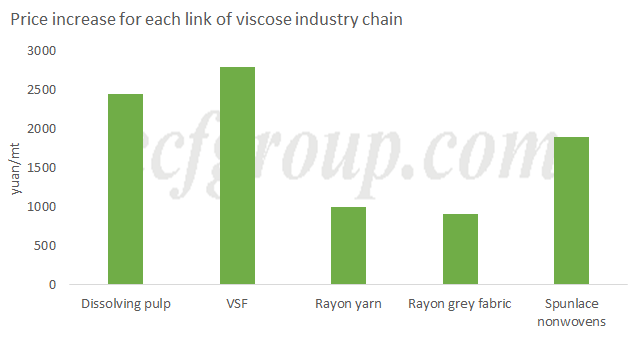
The different price rise of each link has led to divergences in the profitability of each link of VSF industry chain at present. Regarding the actual cost of feedstock inventory, according to the spot procurement model, there is ideal profit for dissolving pulp but loss for other links.
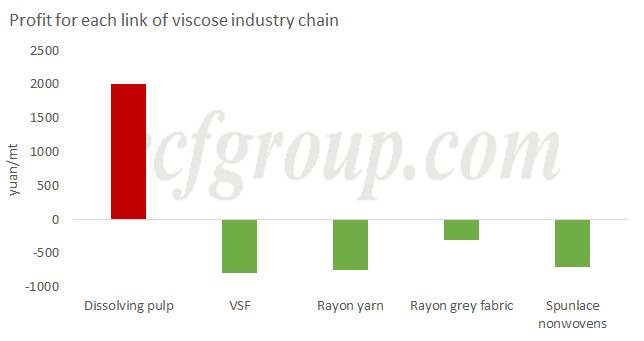
There are obvious differences in the operating rate of each link due to the changes in profit and the difficulty of sales. It can be seen that the operating rate of textiles is falling significantly when extending downward, but nonwovens market performs slightly better.
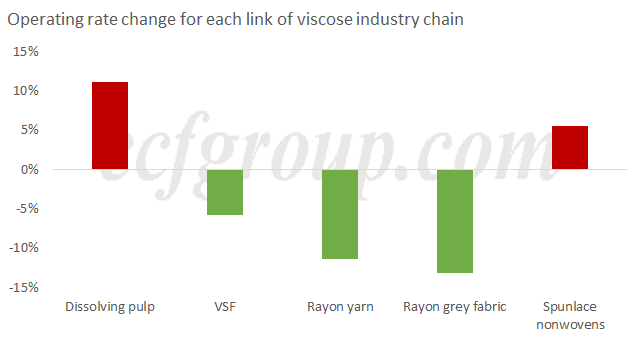
Conclusion
On the whole, the three factors of "demand contraction, supply shock, and weakening expectation" are currently occurring in viscose industry chain. Although there are different feelings for each link, there is direct or indirect impact. The operating rate of manufacturing industry has maintained under the national regulation strategy of ensuring employment, so there are distortions in the industrial chain.
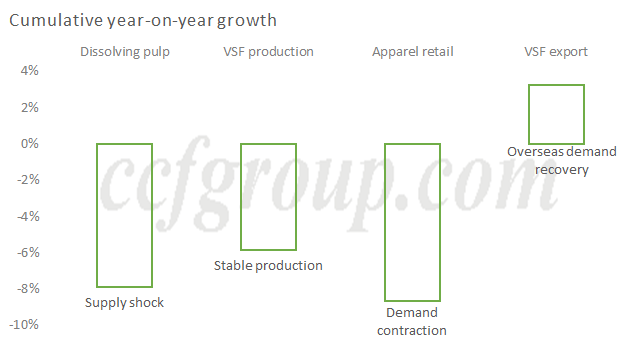
Although the current industry predicament is somehow related with the specific macroeconomic environment, the slow development of new technologies and the continuous reduction of various thresholds are the fundamental reasons for restricting the development of VSF. Under the current difficult environment, breakthroughs in energy, resources, technology, and sustainability may be a new source of high-quality growth in the future.
- Top keywords
- Cotton Price
- Cotton Futures Price
- Cotton Futures
- CZCE
- PTA Futures Price
- Chemical Fiber
- Polyester Prices
- Wool price
- PTA Futures
- Shengze Silk
- China
- Yarn Price
- price
- China Textile City
- Fibre Price
- Benzene Price
- Cotton
- Index
- Cotton Index
- PTA
- fabric price
- NYMEX
- Top 10
- textile industry
- Spot Cotton
- Cotton Yarn
- Polyester Price
- Futures
- PTA Price
- cotton yarn price

